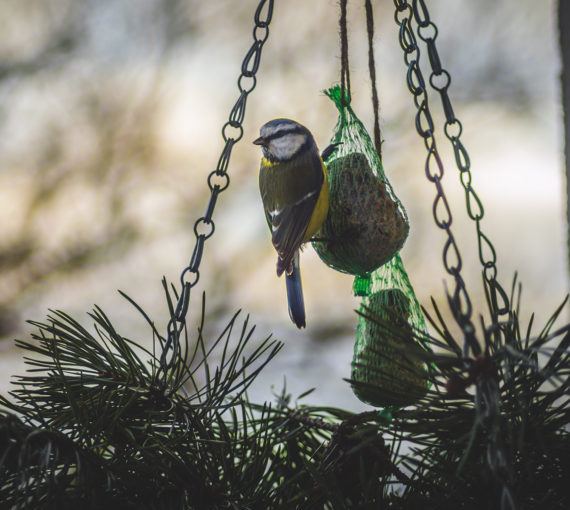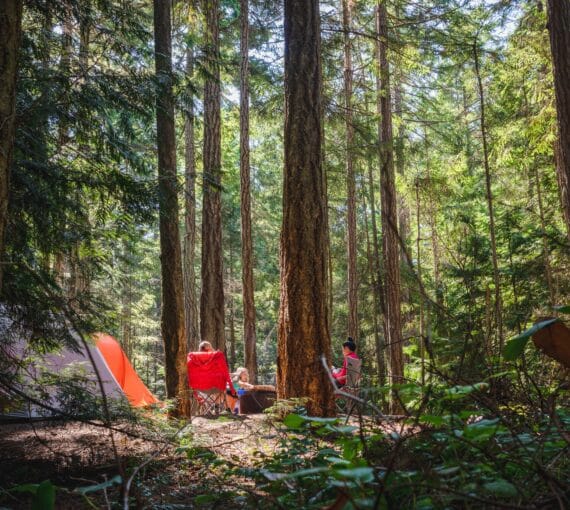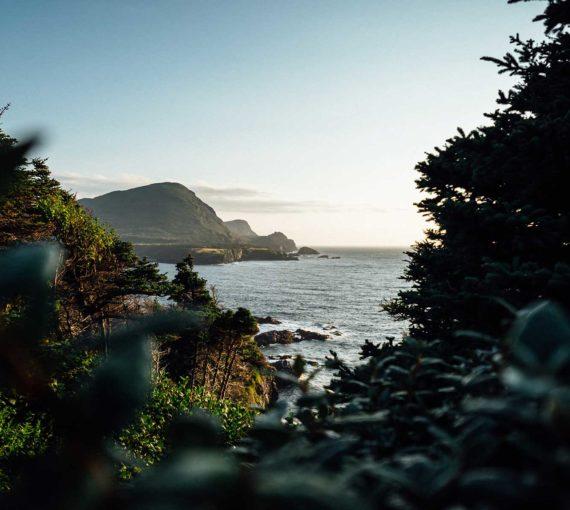
Snowshoeing or riding on a snow sled are great ways to explore new or old favourite natural areas and experience them in a new season. (Photo: Alain Wong via Unsplash)
Any time of year is an opportunity for connecting with nature. Many people fall in love with the special seasonal benefits of fall and winter.
As days shorten, some experience seasonal affective disorder. Even if you don’t have SAD, it’s common to have less energy from September to March. Many creatures hibernate in the colder seasons. Maybe it’s a time for you to slow down too?
Try changing your mindset about cooler seasons. Appreciate fall and winter in your thoughts and your speech. Consciously focus on the positive benefits. Embrace cosy indoor activities like cooking, reading and art or intimate time with friends and family. Focus on making your indoor space comfortable and special. You may find yourself feeling more motivated to get outside.
Exposure to nature provides a range of benefits. These include less stress, improved attention, boosted mood and reduced risk of psychiatric disorders.
Get some sun — even when it’s cold
Commit to get five to 15 minutes of sun time each day to reap the positive health and wellbeing benefits.
Remember: be sun smart year-round, even when it’s not warm outside.
Sun exposure:
- Is a powerful source of vitamin D. Vitamin D is vital for maintaining healthy bones, supporting the immune system and regulating mood.
- Can help release serotonin. The hormone contributes to feelings of happiness and wellbeing. It can also be an effective SAD treatment.
- Helps regulate your circadian rhythm (body clock). This makes for better daytimes and aids in sleep.
Craving more time outdoors this fall and winter but don’t know where to start? Find inspiration in these connecting with nature tips!
WAYS TO CONNECT WITH NATURE IN COLDER SEASONS

Come into your senses
- Watch leaves turn. As trees burst into fiery hues and the air turns crisper, be mindful in nature. Note colours, scents and sounds (like rustling underfoot). Falling leaves can teach us about letting go of what we no longer need.
- Tune in. Snowfall dampens sound waves. Listen for birds, footsteps and running water. Or embrace the silence, breathe deeply or meditate.
- Free your mind. Being in nature can help reduce rumination, a mental pattern associated with increased risk of depression, anxiety and/or obsessive-compulsive disorder. Spending time in nature decreases neural activity in the brain region active during rumination.
- Explore. Weather permitting, choose active transportation instead of driving. Dress for the temperature. Listen to the crunch of leaves or snow beneath your feet or wheels. Feel the air on your face. A 50-minute outing in nature can improve memory and focus by about 20 per cent.
- Wander. Head out. Walk wherever your feet or wheels take you. If you find a quiet spot, stop and enjoy the sounds or silence.
- Take a plunge. Studies show cold water bathing assists in fat loss, boosts muscle recovery, and increases energy and circulation. Go for a dip when there’s still more water than ice. (Submerging for about two minutes will do!)

Look around you
- Stargaze. Embrace longer nights. Spend evenings under the stars.
- Find footprints. Go for winter excursions. Take note of wildlife tracks in the snow.
- Identify winter plants. Learn about trees, shrubs and resilient year-round plants.
- Take inspiration from trees. Many trees shed leaves in autumn to conserve energy through winter. What can you shed that’s consuming your energy? Reflect on this and other lessons trees can teach.

Plan activities
- Pick fruits and vegetables. Support local farmers and enjoy fall harvests. Visit an apple orchard or pumpkin farm.
- Forage for mushrooms. Find edible mushrooms year-round. In some places in Canada (like British Columbia), fall is the best season for picking mushrooms.
- Camp. If you’re feeling adventurous and have appropriate gear to keep you safe and warm, try fall or winter camping.
- Snowshoe or ride on a snow sled. Both are great ways to explore new or old favourite areas in a new season.
- Play. Get your skates on. Grab a hockey stick. Jump on a sled or toboggan.
- Learn winter survival skills. Look for workshops guided by traditional ecological knowledge holders and Indigenous Peoples. Learn foraging, shelter building, fire building, tool crafting and more!
- Play snow snake. Haudenosaunee, Ojibwe, Oneida, Sioux and Wyandotte people have played this traditional game for more than 500 years to lift spirits during long winters. The objective is to slide a long stick (the snow snake) the furthest distance along a smooth trough made in the snow.
Winter activities that are affordable and eco-friendly
Many affordable activities can help you reconnect and recharge with nature. Maximize your winter fun while minimizing your eco-footprint!

Get creative
- Build a snow house or snow sculpture. Snow is a great medium for releasing your inner sculptor. Get the whole neighborhood involved and put on a snow show.
- Create a snow maze. Fresh snow is perfect for creating an outdoor activity for kids and parents! Take turns shuffling and stomping around to form trails for a maze. Challenge each other to get out within a specific time.
- Design a winter scavenger hunt. Make a list or find one online. What can you seek out in the snow — pine cones, footprints, icicles, berries, animal tracks? Invite friends and neighbours to join!
- Get crafty! Decorate indoor spaces for seasonal holidays and events with things you find outside. Responsibly harvest stones and rocks, fruits, flowers, berries, fallen leaves, cones, twigs and branches.

Help nature thrive
- Protect pollinators in winter. Many endure the cold. Help create habitats for these important species by keeping your yard “messy.” Find rocks, woody debris and tree stumps around your yard.
- Plant in fall. Some pollinator-supporting species, such as milkweed, are best planted in the fall so they can undergo cold stratification. The pollinators will thank you in the spring (if they could)!
- Make a fat block bird feeder. Whether your feathered guests are fall migrants or year-long residents, supplementing their diets with high-quality calories will help them survive to reproduce in spring.
Take the One Nature Challenge!
Boost your wellbeing by adding a daily dose of nature to your routine. Spend 30 minutes a day in the great outdoors for 30 consecutive days to kick-start a nature habit that lasts all year.



